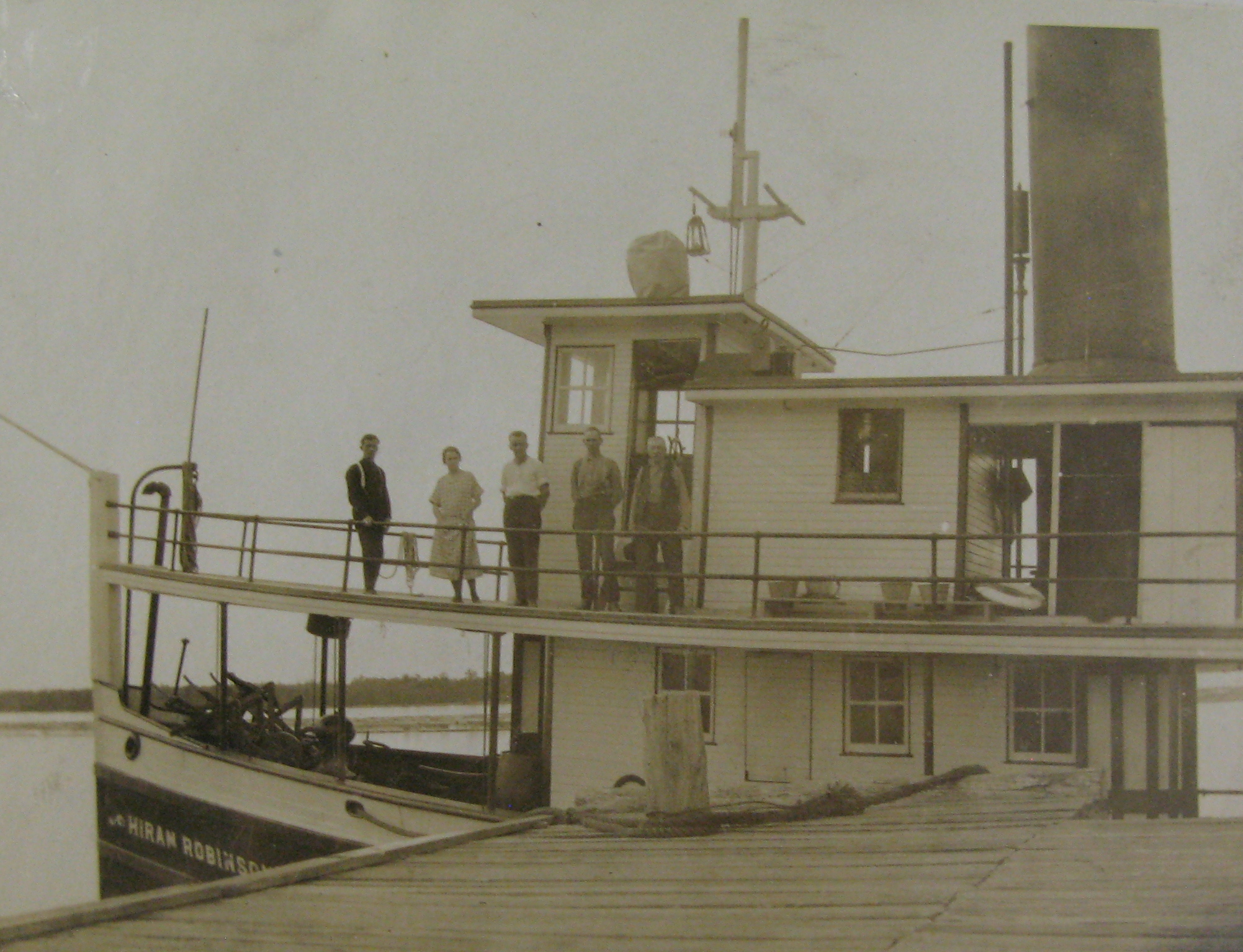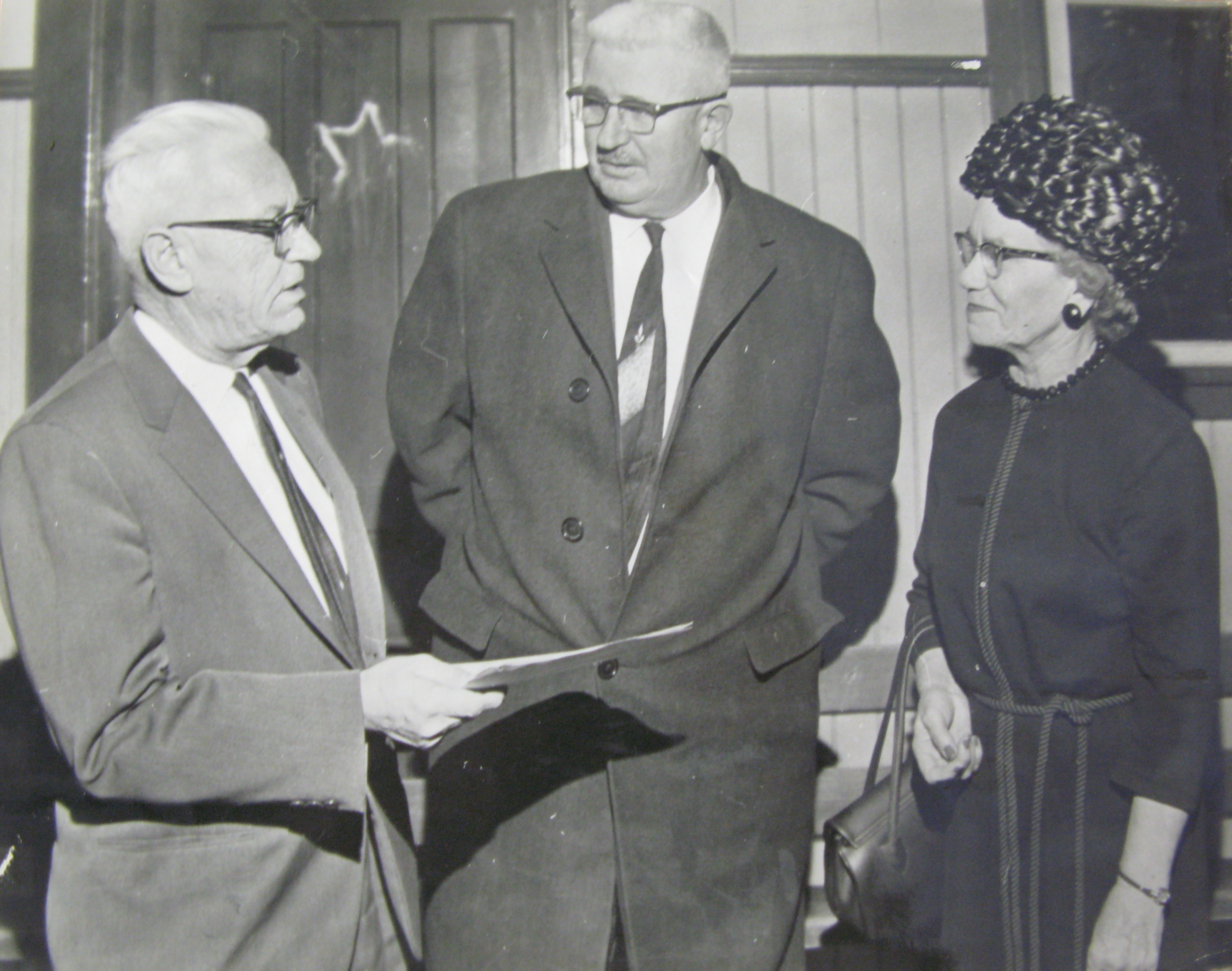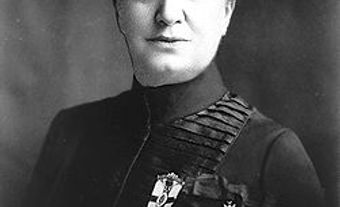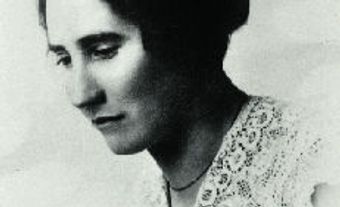
Early Career
Born in Ottawa, Ontario, in 1903, Elsie May Thacker spent her childhood and adulthood in a village on the Ottawa River named Portage-du-Fort, located 100 km west of Ottawa on the Québec–Ontario border. In 1920, she married Gordon Gibbons (1896–1978), with whom she had a son in 1936. The couple made a living selling milk to a local cheese factory. To make ends meet, Elsie wrote articles for two Ontario newspapers: the Renfrew Mercury and the Pembroke Observer. She also sewed and worked as a maid and cook for a successful merchant in Portage-du-Fort.
When the Gibbons’ uninsured home burned down, they had to find a reliable source of income to pay their debts. In 1929, the couple were hired to work on a steamship, the Hiram Robinson, which was owned by the Upper Ottawa Improvement Company (ICO). In the summer, the ship towed logs floating on the Ottawa River at Lac des Chats. Elsie cooked for 11 men, including her husband, who was a deck hand.

In 1930, the Gibbonses opened a small grocery store in Portage-du-Fort, and Gordon managed the postal outlet in the store. When the contract with the government ended, Elsie stayed in business, while her husband decided to go into cattle rearing.
The late 1940s proved to be good years for the small community and for Elsie Gibbons’ business. In 1948, Ontario Hydro began construction on the Chenaux generating station and dam at Portage-du-Fort. Approximately 1200 men worked on the site. They shopped at the store and cashed their pay cheques there. Elsie now managed a growing general store that doubled as a restaurant. Because of the large housing demand, the Gibbonses had two houses and two cottages built and fixed up a number of other residences that they then rented to the workers.
During this time, a tank service provided the village with water. When construction was completed, the service ended. Because the municipality had no water distribution system, most villagers without wells had no drinking water. Buying a barrel of water taken directly from the river was rather expensive. Resolving this vital issue would serve as the springboard for Elsie Gibbons’ political career.
Québec’s First Female Mayor
On 13 May 1953, Gibbons was elected by acclamation (and in absentia) mayor of Portage-du-Fort. Because she was in the retail business, voters considered her to be in the best position to convince provincial authorities to supply the village with water. Gibbons decided to rise to the challenge and thus became the first female mayor in Québec’s history (see Municipal Government). She was elected just 2 years after Charlotte Whitton became the first woman to be mayor of Ottawa (and thus of a major city in Canada) and 13 years after women in Québec gained the right to vote in provincial elections.

During her administration, Gibbons convinced the villagers to vote in favour of establishing a water distribution system, even though this would put the municipality in debt because, at the time, the government rarely funded infrastructure projects of that sort. Gibbons nevertheless succeeded in obtaining $15,000 from the local MLA, Raymond Johnston of the Union Nationale party, to start work on the project. The balance was raised by selling coupons to the villagers. She also provided the village with a new fire hall, had all the roads paved in the small 500-person municipality, renovated a number of public buildings, and developed sport and leisure facilities.

Gibbons served as mayor for 18 years straight until she narrowly lost the 1971 election. She returned as a councillor in 1973 and was re-elected mayor in 1975. She stepped down in 1977. From 1959 to 1961, she was also the warden of Pontiac County (now the Pontiac Regional County Municipality). She led a council of 25 mayors, all men, who reported to her. In an interview with the Montreal Gazette in 1971, she said that the male mayors “never considered [her] as a woman and were always very respectful and cooperative.” She was the first woman to hold that position in Québec and likely in all of Canada as well.
Women in Politics
Gibbons’ memoirs make it clear that she was aware of being a trailblazer. She points out repeatedly that she was the first woman to hold a prominent position in municipal politics in Québec. She also comments on women in politics and the changes in attitudes toward women within society at large. She notes that, when she was elected in 1953, she was given the masculine title “Mayor of Portage-du-Fort, Mrs. Gordon Gibbons.” Here, language conventions buried the woman’s legal personality under her husband’s name (see Persons Case). A few years later, when she became warden of the Pontiac County in 1959, she was recognized as a woman and her job title was feminized. She was introduced as “Lady Mayor, Elsie M. Gibbons.”
In a January 1960 interview with journalist Charles B. Lynch, the Ottawa bureau chief of Southam News, Gibbons stated that women should take centre stage and stop hiding behind their husbands — they were quite capable of running the country. As far as she was concerned, women were as competent as men in politics. In a letter to Saturday Night in 1959, she stated that having experience in business or administration or showing concern for the well-being of the community would pave the way to success for those who wanted to get into politics.
Signifiance
Although her political activities were largely local, Gibbons was a true pioneer in Québec politics. She is increasingly mentioned in government literature on women in politics. In 1980, only 1.5 per cent of mayors and 3.8 per cent of councillors were women; in 2013, about 17 per cent of elected mayors and 32 per cent of councillors were women. Though these figures seem encouraging, there is still much progress to be made in achieving gender equality in municipal politics.
In April 2015 on the occasion of the 75th anniversary of women’s right to vote in Québec, the government of Québec paid a posthumous tribute to the former Mayor of Portage-du-Fort. On 8 March 2017, the Fédération Québécoise des Municipalités announced the creation of the Elsie-Gibbons Award to recognize women's involvement in municipal politics.
Gibbons handwrote and compiled two albums that focus on her years in municipal politics. These albums are kept at the Pontiac Archives in Shawville, Québec.

 Share on Facebook
Share on Facebook Share on X
Share on X Share by Email
Share by Email Share on Google Classroom
Share on Google Classroom

